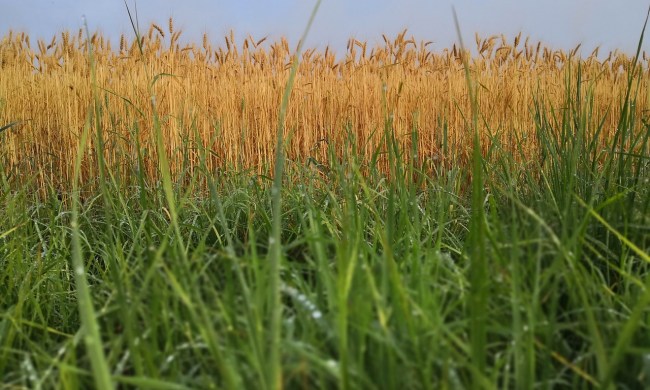The details make all the difference when it comes to lawn care. Some homeowners are content to mow the lawn when it grows too high, and perhaps water it during dry weather. This is enough to keep your lawn alive, but not enough to make it thrive. Fertilization, strategic mowing, and planting native grasses or ground covers can make a big difference in your lawn's appearance and health. Just like any other plant, grass has different needs in different seasons, so your care routine should change to fit each season.
After an intensive growing season, your grass is ready for a change. Warm-season grasses will begin to go dormant to save energy for spring, while cool-season grasses will be putting out new growth. As your lawn enters this transitional period, there are several things you can do to ensure it thrives. Here's what you need to know about fall lawn care.
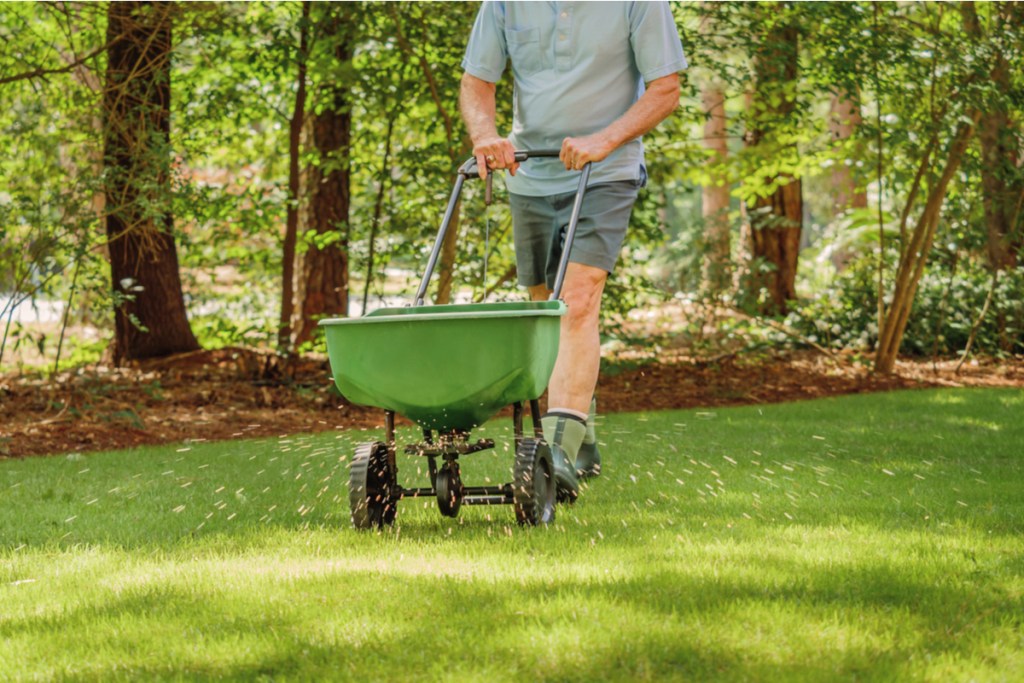
Boost fertility
Whether you have a warm-season or cool season-lawn, fall is prime time for fertilization. Cool-season grasses need a fresh application of nitrogen-rich fertilizer to thicken up the foliage. Warm-season grasses benefit from a final feeding two months prior to the first fall frost date. This will boost stores for winter and ensure a faster transition when the weather breaks in spring.

Leave the leaves
An often overlooked part of soil health is the free lawn food that falls from the trees. Fall leaves can boost lawn fertility and add large quantities of beneficial organic matter to the soil if you leave them in place, but don’t let them smother the lawn. Here's what to do.
Step 1: Mulch the leaves with a lawn mower.
Step 2: Make sure at least half an inch of grass is visible underneath the leaves. If the leaves are too thick, they may smother the grass.
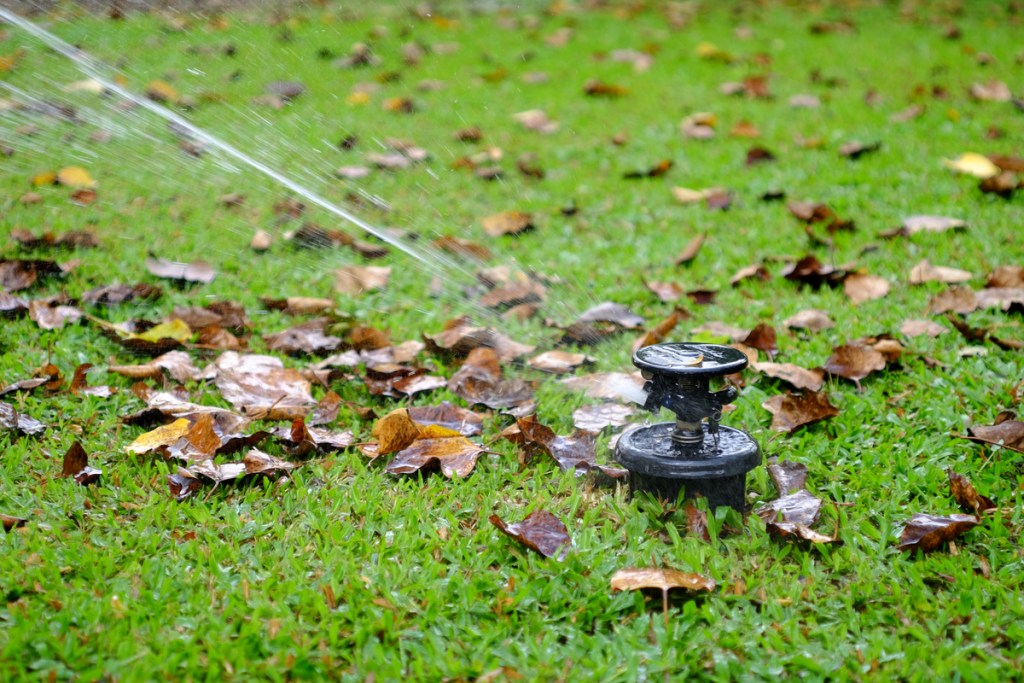
Adjust irrigation
Don’t let the cool, crisp autumn air fool you, it’s dry out there. If you aren’t getting rain, your lawn is thirsty. As long as it’s warm enough for the grass to grow, it needs about an inch of water per week from rainfall and irrigation combined. Insufficient water leads to slowed growth, but more importantly feeder roots may be damaged. So keep the sprinklers at the ready and add a little water during dry spells.
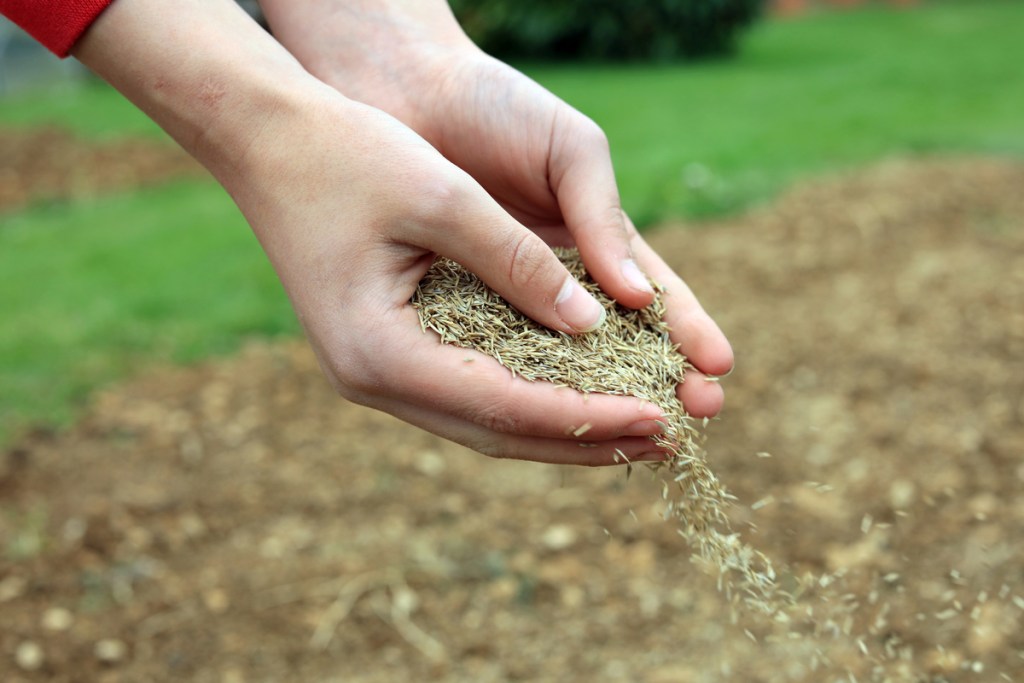
Rejuvenate cool-season grass
Hot summer weather is stressful to cool-season grasses. If they’re damaged, they don’t have the capacity to regrow easily. When the heat subsides, take action.
Step 1: Aerate your lawn with a core aerator a few days after heavy rain. Doing so also prepares the soil surface to replace thin or dead patches by overseeding, loosens compacted soil, and improves airflow to the roots.
Step 2: Apply grass seed starting four to six weeks before your first frost.
Step 3: Keep your seeds moist by lightly watering them daily for the first two weeks.
Step 4: Avoid mowing the lawn for the first month after seeding.
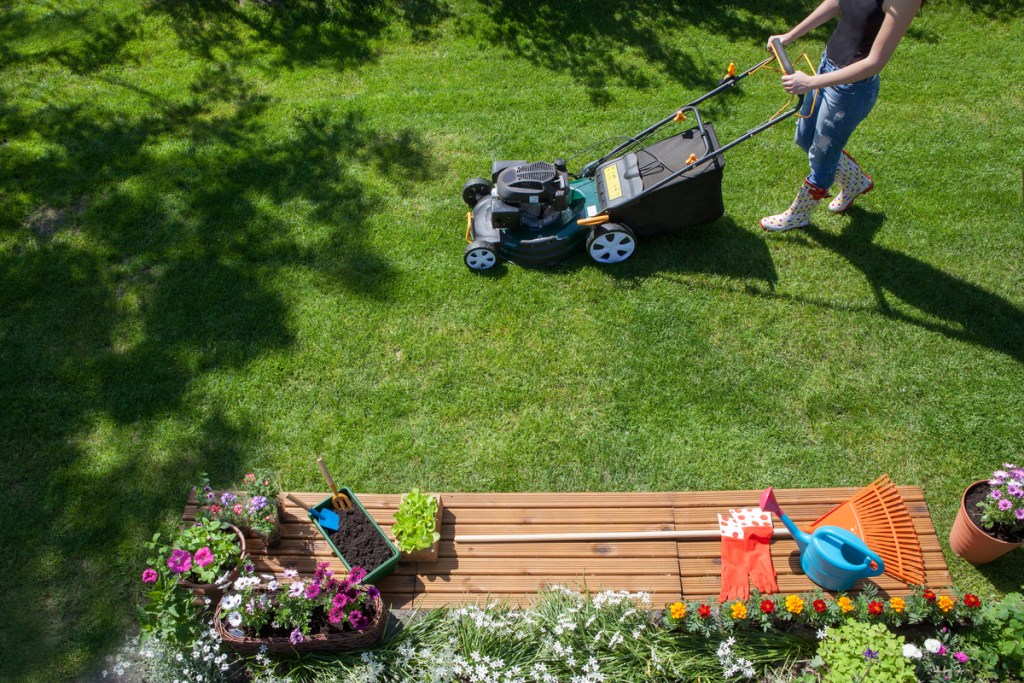
Prevent cool-season weeds
Those who don’t plan on seeding in the fall can apply pre-emergent. This class of herbicide forms a chemical barrier at the soil line, preventing seed germination of cool-season annual weeds like Poa annua, chickweed, and henbit. The granules are easy to apply with an ordinary lawn spreader, and are activated by rain or irrigation. However, these products also kill grass seeds and young seedlings, and shouldn’t be applied the same season as seeding.
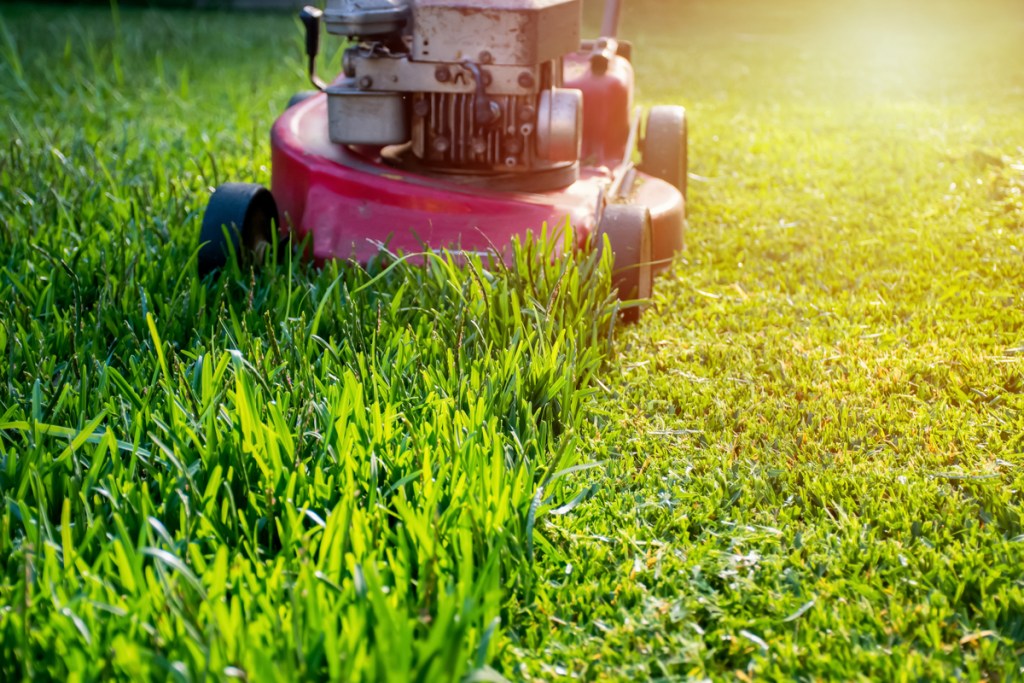
Mow until the grass stops growing
Whether your lawn is made up of warm-season or cool-season grass, it isn’t helpful to let it remain long through winter. Here's how to properly mow your lawn through fall and into winter.
Step 1: Mow your grass at regular intervals until it stops growing for the season. Doing so will make it more resistant to winter damage and mold problems. Plus, the shorter grass will look better as it emerges next spring.
Step 2: Only cut one-third of the total height of your grass, leaving two-thirds to continue growing. Cutting grass shorter than this causes stress, which leads to a patchy lawn.
Step 3: Slowly decrease how often you mow your lawn as the season progresses. The grass will grow much slower during winter, so your mowing should slow to match it.
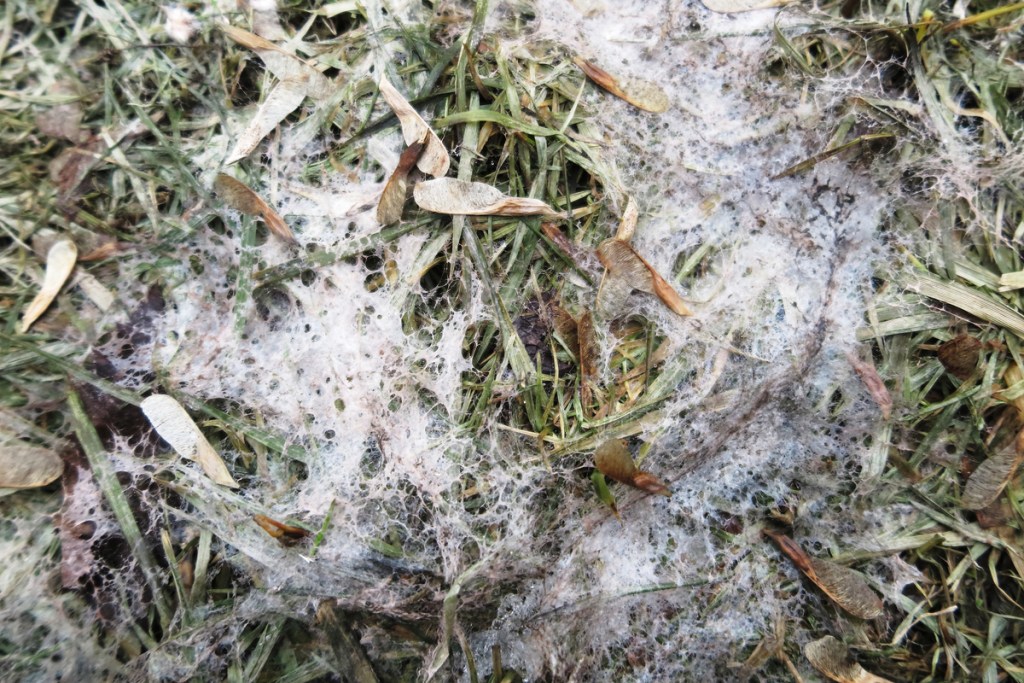
Watch for fungal infections
Fall leaves, less light, and damp weather are the perfect environment for certain lawn fungal infections. When you think of fungi, mushrooms might be your first thought, but mushrooms aren't the biggest threat to your lawn. Instead, watch closely for signs of snow mold, which thrives in the fall. You can prevent snow mold by applying a preventative fungicide, Additionally, removing dead material that the mold can feed on (such as excess leaves, thatch, and grass clippings) and aerating your lawn to improve drainage can help.
Snow mold typically forms during fall and winter, but you might not be able to see it until spring if your lawn is buried under snow. Taking preventative measures in early fall can save you some trouble down the road!
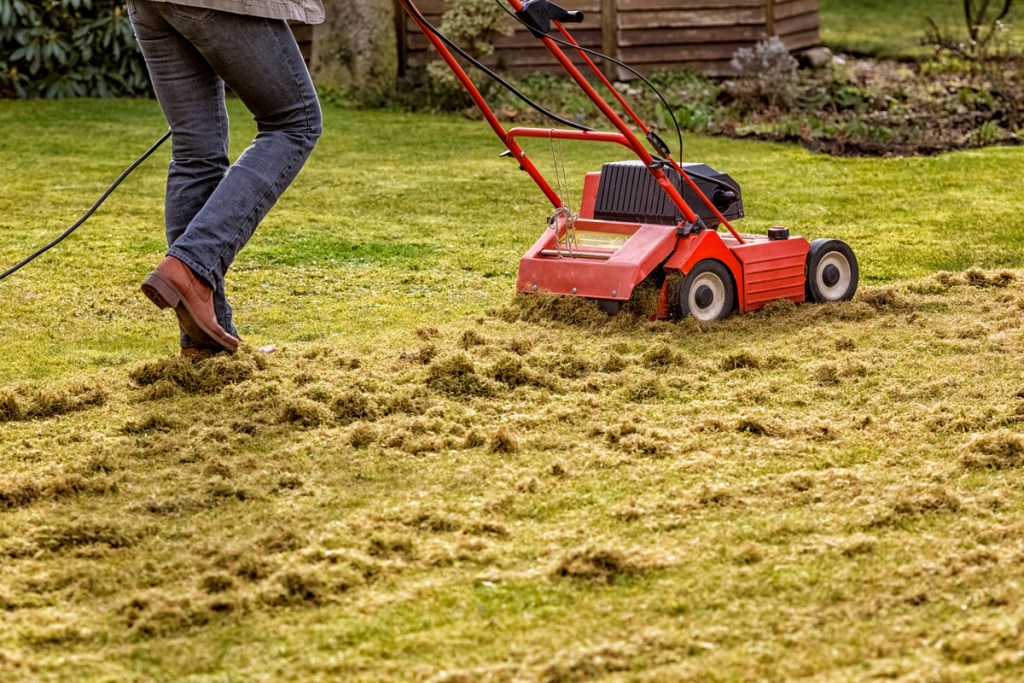
Dethatch your lawn
Thatch is a naturally occurring layer of mostly dead (and some living) plant matter that forms a mat on top of the soil. A little bit of thatch serves to insulate the ground and works a bit like mulch, but when the layer becomes too thick it can stop air and nutrients from reaching your lawn's roots.
Dethatching your lawn just means removing this layer, and it can be done with a lawn dethatcher, a dethatching attachment for a mower, or a rake. Late summer or early fall is the best time to dethatch your lawn, with August through October being the most commonly recommended time frame.
Fall lawn care isn't terribly complicated, but it is important. Without proper care, your lawn can be damaged during fall and winter by the cold weather. Planting grass species that are well-suited to your climate can alleviate much of the stress, but even hardy native grasses will still need a little help to ensure your lawn stays lush and healthy. Now that you know what needs to be done, you can help your lawn transition into fall, then winter, so that when spring arrives you have a gorgeous green lawn!




